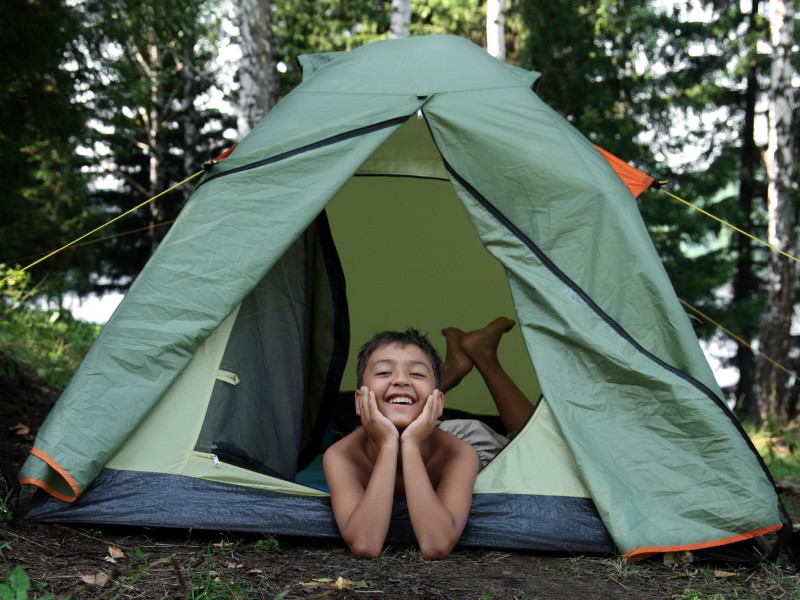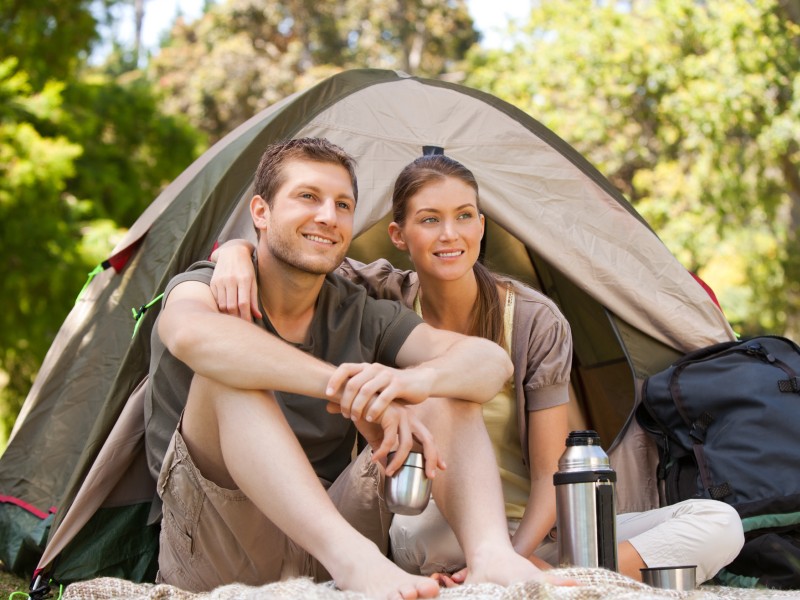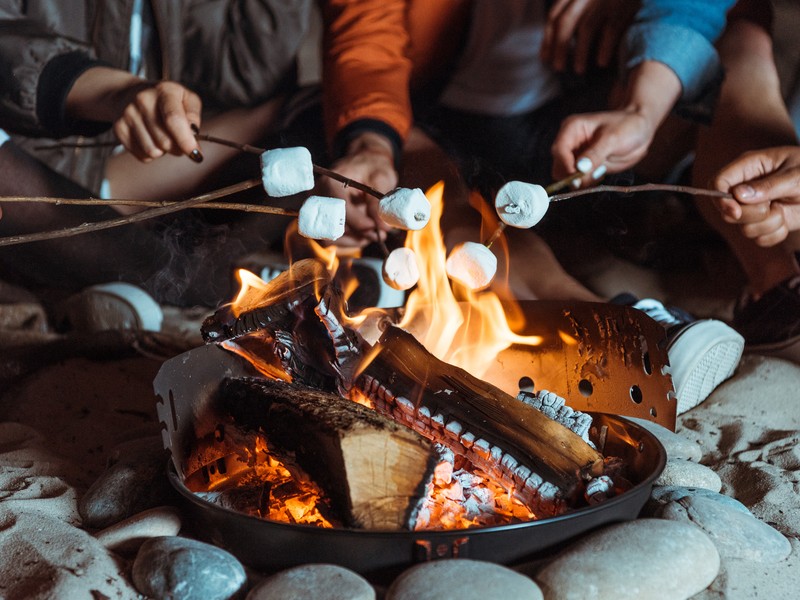Before the Trip
The best time to resolve this issue is before you actually start the camping trip. Purely by making sure you know how your tent works the day before you leave, you can avoid a major headache.
Practice, Practice, Practice
If you are borrowing camping gear from a friend or dealing with a new tent, it’s always best to nip pre-camp jitters in the bud by performing a practice setup.
There’s no better way to become familiar with your tent than to try putting it together before you hit the road.
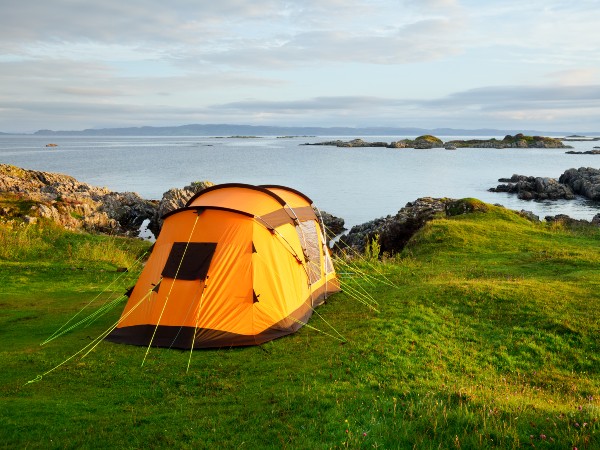
In full daylight from the comfort of your home, you can carefully read the instructions, check labels, and make sure all of the pieces of the tent are functioning correctly.
After all, it would be incredibly uncomfortable to be in the middle of the cold, dark wilderness realizing there’s no way you’ll figure out how to set up your tent.
On that note, if you have other complicated gear, such as a camping stove, see if you can try getting it lit expediently so you’re not left eating cold pasta at the campsite.
Make Sure to Bring Hands-Free Light Sources
If you’re pressed for time and can’t set up your rig beforehand, make sure to at least bring sources of light that make it easy for you to use both your hands to set up the tent. Headlamps or necklace lights are perfect for this purpose.
Alternatively, Bring a Hammock!
Hammocks are perfect for solo campers who are going to forested areas. Just in case your tent is pretty complicated to configure, bring a hammock or some other sleeping gear that you are very familiar with setting up.
Additionally, hammocks are comfortable, often warm, and can give you a great view of the stars. If you do opt for a hammock, try and bring a bug net or plenty of bug spray so that you don’t get attacked in the middle of the night.
Other sleeping options include a tarp on the ground where you can put your sleeping bag. This ensures that damp groundwater won’t leech into your warm cocoon over the course of the evening.
Of course, this all depends on the time of year, expected weather, and temperature of the campground at night. Make sure you understand whether or not you’d be comfortable using alternative sleeping arrangements.
You can avoid all of this by just renting an RV.
Make Sure to Carry Instructions for the Tent
This is an absolute must for tents that you are unfamiliar with. Stuff whatever instructions come with the tent in the tent bag so that you are certain you can figure it out when you arrive on site.
You can even translate the instructions or write your own at home if your way of stating them is more comfortable for you.
During the Trip: For a Campground
So, you’ve made it to the campsite and you didn’t follow any of the above tips? Don’t worry, there’s always a workable solution just around the corner.
If you’ve made it to the site and neglected to get familiar with your tent, there are tips you can follow to make sure you end up sleeping comfortably at night.
Ask Another Camper for Help
Is your site populated with other campers just around the corner? If so, you’re probably in luck. It always seems that people are more friendly and helpful when they’ve made it to the great outdoors.
If you forget how to set the tent up properly / correctly, don’t be ashamed to ask others. It’s more common than some people want to admit!
Don’t be afraid to head to the neighboring site to find someone who’d be willing to help you set up your tent. First, make sure they are awake before attempting to approach.
Many campers stay up late into the night partying with other friends. In this case, you can bring a party favor – maybe offer ‘smores or an extra beer to the neighbor that offers to help you out.
Explore the Great Outdoors with Us!
Contact the Park Ranger or Campground Manager
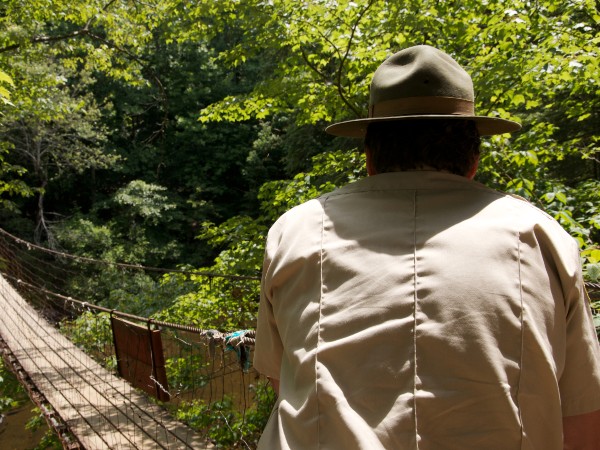
If the night is quiet as could be and it seems everyone is asleep, don’t hesitate to reach out to the campground manager to try and resolve the issue. Campground managers and staff are meant to stick around to help fix any issues that arise during your stay.
Typically, somebody is on staff 24/7.
In this case, it’s best if you picked up a map at the visitor’s center or check-in desk to see where the manager is stationed. Otherwise, make a trip to the check-in booth and the ranger should be staying somewhere nearby.
Campground managers have heard any number of requests from ill-prepared travelers and are usually very experienced with camping gear – after all, it’s their job!
Campground managers also often have extra gear that campers can use. If you find you are missing pieces of the tent, this may be a helpful option for you. Sometimes staff will have extra poles, stakes, or other gear.
During the Trip: For the Isolated Wilderness
Are you not staying at the pre-defined campground site with other neighbors? Are you somewhere in the great outdoors?
The more adventurous campers normally opt for isolation and solitude away from any other campers. Again, there’s no need to worry if this is the case.
Organize and Lay Out All Your Gear
The first step is simply not to panic. Before getting more confused about how your tent works, try and lay out every piece of the tent on the ground.
Group the different poles and metal pieces in one area and the actual fabric of the tent in another pile.
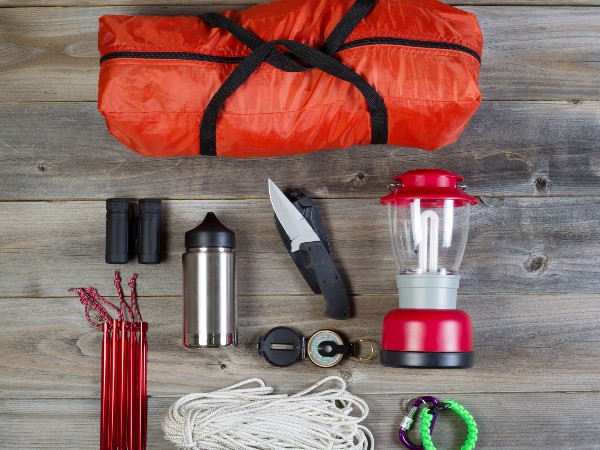
Try configuring the poles first, one at a time, and examine which pieces are longer than the others. Purely by taking a careful look at your gear, will give you a good idea of what poles are meant to go where.
The added benefit of this approach is that you will be able to determine if you are missing any vital pieces for your tent set up. If you are missing a pole, you may be able to configure the tent so that it still drapes above you.
Missing Gear? Use Your Environment
Are you missing a vital piece of the tent that is stopping you from putting it together? Perhaps you’re even missing several crucial items. If you are, it doesn’t matter if you forget or not, you won’t be able to set the tent up properly!
It’s equivalent to having all the supplies to make something, but you just don’t have the screwdriver(s) or hammer with you!
Experts say that, as long as you have a ground tarp that is waterproof and an overhead covering, you should be good to go. If you’re in a densely forested area, try and find a thick branch that is at least two feet tall.
Situate the trunk in the middle of the ground tarp and place a rock around the base to secure it. Gently drape the tent covering over the hunk of wood and further secure it by drawing the tarp taut.
Then, use tent stakes to secure the tarp over the wood.
This way, water and other particulate matter will be prevented from penetrating the tent. As long as you can make the covering above you tight, you should be well covered enough to prevent water or rain from leeching into your tent.
Additionally, make sure the covering is not touching any part of your body since condensation could permeate your sleeping bag.
You Have to Know When to Leave
If the weather forecast looks rainy or unsafe, and you truly have no resources to get your tent up, you should consider whether or not it is safe enough to stay in. Even in the summer, hypothermia or other illnesses can pose a great risk in high-altitude environments.
One of the greatest risk factors for becoming ill is to have cold water or condensation penetrate your sleeping bag over the course of the night.
Ultimately, your safety is a priority. If you are unable to protect yourself from rainwater overnight you could be risking yourself unnecessarily.
However, if you backpacked to an isolated location, it may be best to stay the night and make the best shelter possible. Poor lighting conditions could pose the risk of you getting lost.
Only leave the area if the trail is very well-marked, short and easy to follow during the night.
If you happen to forget the correct way to set your tent up properly, watch the video below and it’ll help big time!
Related Questions
- What are some common mistakes people make when setting up their tents for the first time?
Some common mistakes people make when setting up their tents for the first time include choosing an inappropriate location, such as a low spot that can collect water or a place with loose or rocky soil that can’t secure the tent stakes.
Additionally, they often neglect to properly orient the tent in relation to the wind direction, fail to secure it tightly causing it to sag or collapse, and forget to use a footprint or tarp underneath to protect the tent floor from moisture and sharp objects.
- How can you ensure you have all the necessary components of your tent before leaving for your camping trip?
To ensure you have all the necessary components of your tent before leaving for your camping trip, it’s essential to create a checklist of all the tent parts, which typically include the tent body, rainfly, poles, stakes, and guylines.
Prior to your trip, assemble the tent at home to confirm you have all the pieces and that they are in good working condition.
- What are some alternative sleeping arrangements if you’re unable to set up your tent?
If you’re unable to set up your tent, consider using a bivvy bag, which is a small, lightweight, waterproof shelter.
Alternatively, you could also use a hammock, sleep in your vehicle if it’s available, or find a natural shelter like a cave or under a large tree, but always ensure it’s safe and legal to do so.
- What steps can you take if you arrive at your campsite late at night and need to set up your tent?
If you arrive at your campsite late at night and need to set up your tent, first, use a headlamp or a flashlight to illuminate the area and carefully inspect the ground for any hazards or uneven terrain before you start.
Then, unpack your tent and follow the instructions for assembly, ensuring that all the components are correctly connected and the tent is securely staked to the ground to withstand any overnight weather conditions.
- How can you use your environment to your advantage if you’re missing crucial tent components?
If you’re missing crucial tent components, you can use your environment to your advantage by utilizing natural shelters such as caves, overhangs, or dense tree cover for protection from the elements.
You can also use materials found in your surroundings, like branches, leaves, or snow, to construct a makeshift shelter or to supplement your existing tent structure.
"Of all the paths you take in life, make sure a few of them are dirt."
-- John Muir
